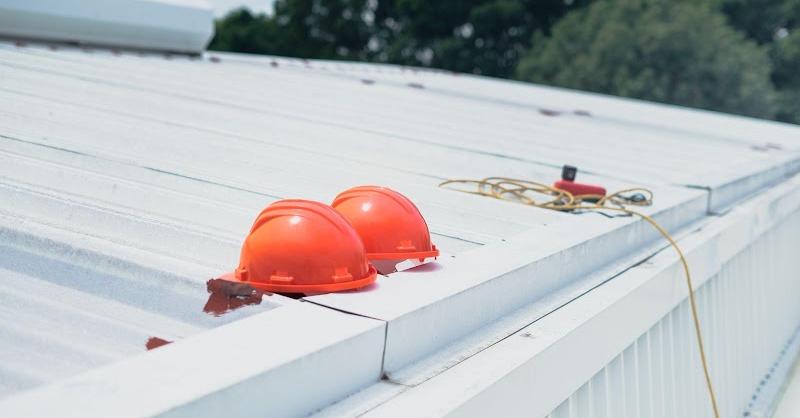Storms such as tornadoes, hurricanes and blizzards often bring flooding and wind damage. By prepping your home ahead of time for these devastating events, you can help reduce potential damages and losses.
Create and practice an emergency family plan regularly. Keep a list of important phone numbers handy, and locate and store items that might come in handy during an event like this such as flashlights and batteries, radios and hygiene supplies.
Clear Your Gutters
Clean gutters are essential in maintaining the appearance of any home as well as protecting it against water damage during storms. Clogged up gutters stain siding, ruin roofing shingles and can overflow in rainstorms; as a rule of thumb homeowners should clean their gutters twice each year in order to maintain functionality and avoid expensive repairs in future.
When cleaning your gutters, use a ladder of sufficient height.
If possible, enlist the aid of a friend or neighbor; they could call for help should anything go wrong. Also be sure to wear gloves so that any debris doesn’t adhere to your skin while working in your gutters.
As well as cleaning your gutters, it is also advisable to clear the area around your home of any unnecessary toys, lawn furniture, grills, propane tanks or building materials that could become airborne during a storm.
Trim trees near to your house as well as consider purchasing a generator with battery backups in case power outages occur and provide power for running electronic devices and keeping fridges and freezers colder for longer.
If you live along a coastal area, monitor storm surgesand adhere to evacuation orders from local authorities. Remember that flood waters could contain toxic materials so it is wise to stay clear from them.
Create and review an emergency plan as a family so all members know what to do in case bad weather strikes.
Keep important documents, such as birth certificates, passports and wills in waterproof containers for safekeeping; locate safe shelter for pets and farm animals during storms; equip everyone with sturdy shoes or boots in case evacuation becomes necessary quickly; review homeowner’s insurance policies in terms of coverage extensions such as water backup and flood coverage to complete this plan.
Move Outdoor Furniture
If your outdoor furniture, toys and other objects could become projectiles when subject to strong winds, move them to safer spaces such as your garage or shed. Anchoring these objects to the ground may help stop them being carried off by strong gusts of air.
One important step to take when preparing for a storm is making sure your windows are covered. Installing permanent storm shutters or covering them with plywood cut to size may help. Also, top of the line hurricane windows can help protect your home from extreme weather. Be sure to secure these supplies well ahead of any major weather event.
As storm season approaches, it’s vital that you have an escape route in place if necessary.
Create and discuss with family a family emergency plan prior to severe weather occurring so everyone knows what they should expect during an evacuation situation.
Include evacuation routes and designated meeting points within your plan as well as how your pets will be cared for if need be. You can click the link: https://kidshealth.org/en/parents/hurricane-prepare.html for other ways to help prepare kids for hurricanes.
Secure Mobile Homes
Hurricanes can be terrifying events, bringing flooding, high winds and tornadoes with them – potentially leaving your mobile home severely damaged and making it unsafe for habitation.
However, several precautions can help secure it against storm-related damages and minimize their effect.
A key step you should take to protect your home against severe windstorms, such as hurricane-induced winds, is inspecting its tie-downs. These anchors or straps help ensure that it can withstand strong wind gusts that may occur during hurricanes. Make sure they’re installed correctly; otherwise have them professionally inspected.
Securing your manufactured home will not only protect it from storm-related damage, but will also keep you and your family safer during hurricanes. Other steps you should take include creating a family emergency plan, learning evacuation routes and creating an up-to-date disaster preparedness kit.
Furthermore, ensure to lock cabinets and store valuables safely within an upright box or vault as well as consider installing child locks to prevent items from flying open during a storm and breaking open onto the floor.
If you live in a manufactured home, it’s always wise to heed local evacuation warnings and seek shelter elsewhere during a hurricane. Mobile homes were not meant to withstand the force of tornadoes or straight-line winds; therefore it is wiser to find more solid structures as shelter.
Store Valuables
If you live in an area prone to hurricanes, it’s essential that you create a plan that includes protecting both your valuables and property from storm damage. Just a few simple steps could save both money and lives should the worst occur.
Whenever possible, store your belongings in a safe spot away from home. This could include storing them in an underground storm shelter in your garage, the lowest level room that usually offers protection during storms, or even at your neighbor’s house – the key thing being keeping these items out of harm’s way of high winds, raindrops and debris.
An essential step to prepare your home for storms is stocking it with plenty of food and water supplies. Aim for three days’ worth of non-perishable foods. Additionally, keep bandages, antiseptic wipes, tweezers, medical tape and gloves on hand as well as multi-tools, flash lights, whistles to signal for help as well as copies of insurance information close at hand.
Keep a list of your valuables stored away and take photos to document them, as this could prove useful should the storm cause damage to them. Furthermore, put up sandbags around the exterior of the house as this will provide added flood protection.






